Roofs have long ceased to be just the covering on top of a building that protects the people and things inside from the weather. Favouring this element for the breath-taking views it may offer, architects endow rooftops with different functions, sometimes totally striking and extraordinary.
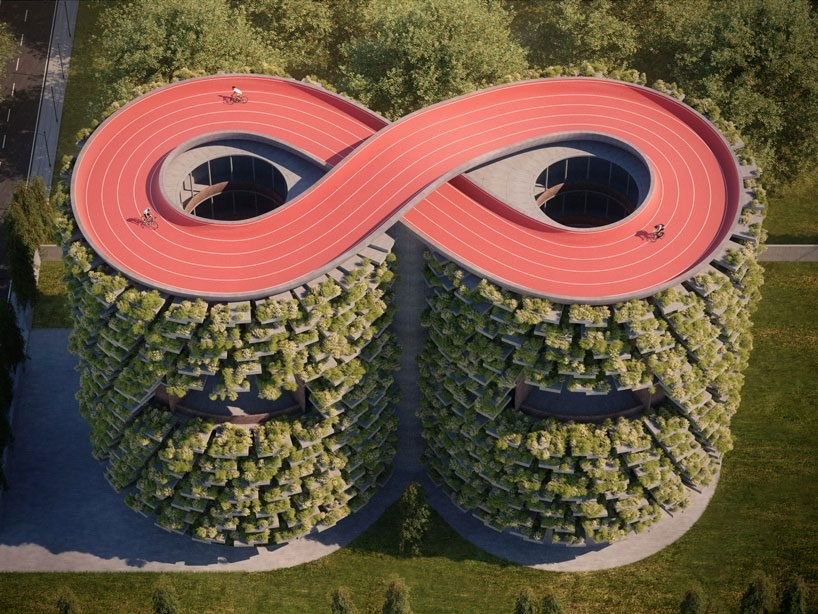
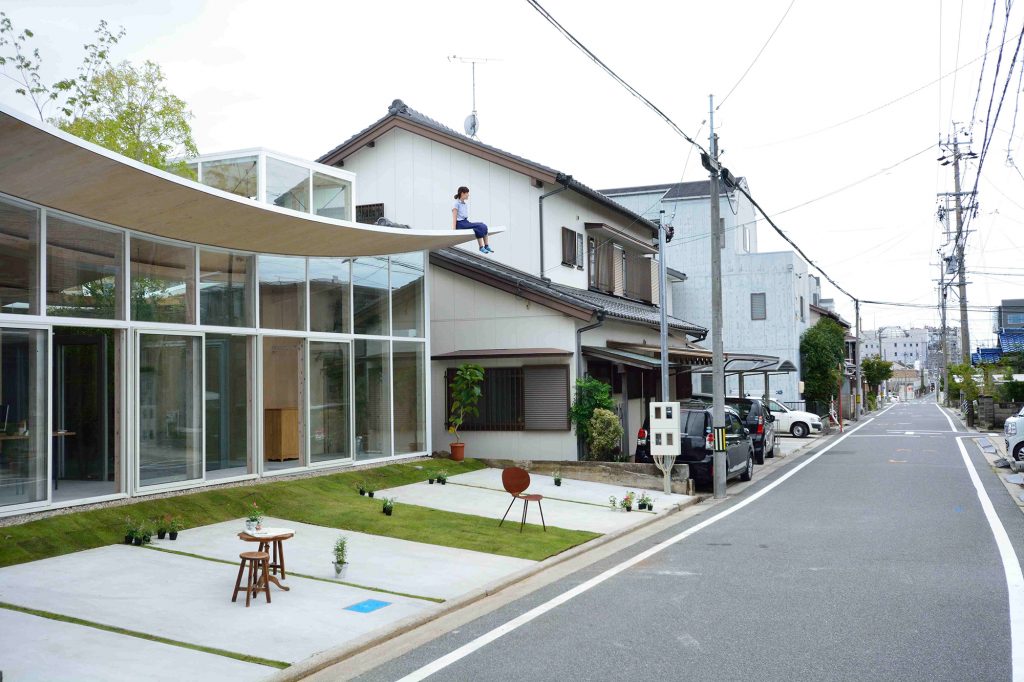
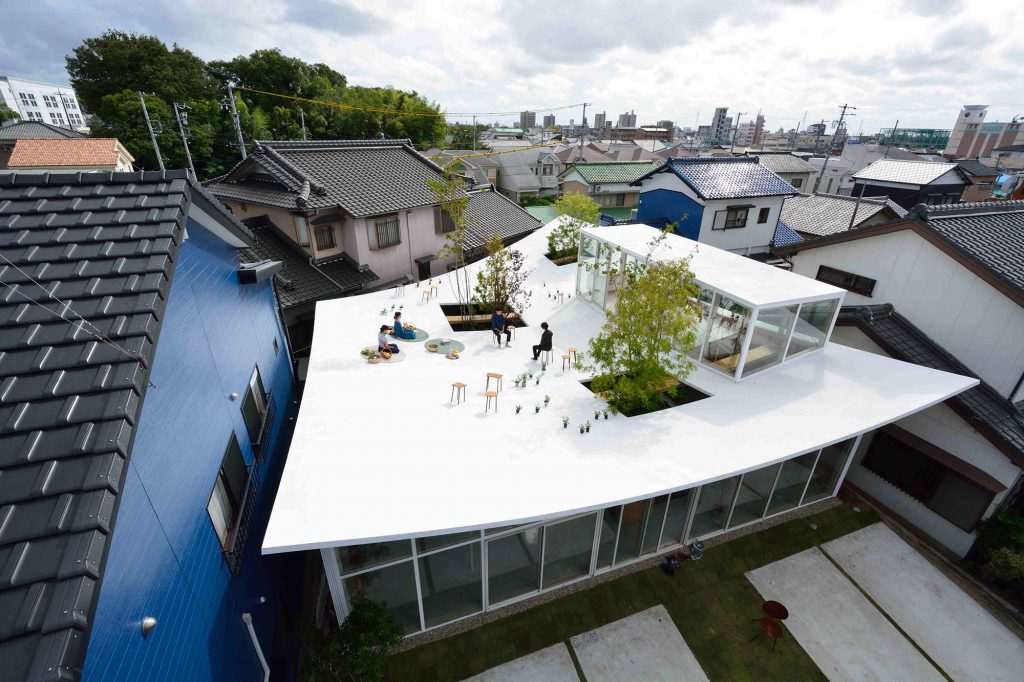
Sannouno office building by Velocity
Japanese architecture studio Velocity has topped an office building in Okazaki city, Aichi prefecture, Japan, with a curved inhabitable roof. The lower level of this two-storey wooden structure houses open plan workspace areas, while the upper floor comprises a small communal kitchen and dining area, which open toward the open air area. Through a series of opening in the roof trees of the ground floor grow freely, which creates an atmosphere of the park amidst surrounding densely built constructions while maintaining privacy.
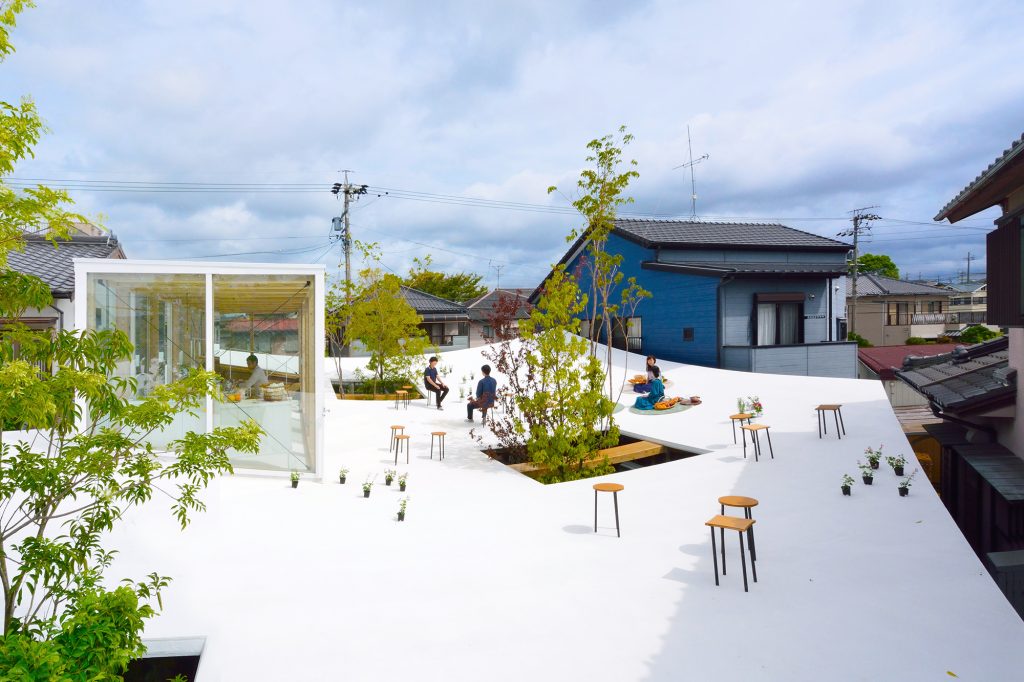

Sannouno office building by Velocity
The roof’s structure deserves special mention. The team utilized a prestressed structure with the assumed maximum load pulled in advance and fixed in place. Its curved surface is manufactured from a flat material and has a very thin cross section. Internally, the curved form of the roof results in a ceiling of varying heights for the workspace area, while outside it appears to be floating in the cityscape.
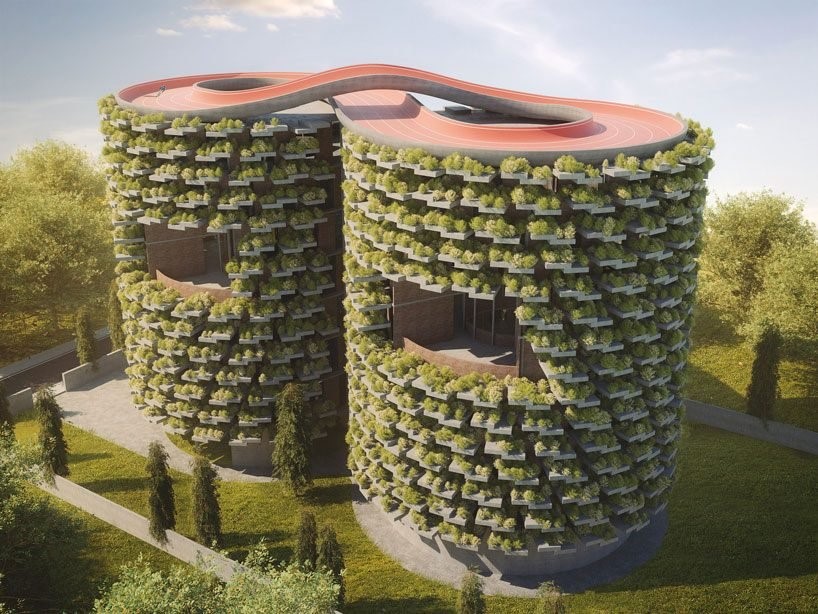
“Forest” school by Nudes (via designboom; also header image)
Mumbai-based studio Nudes has won a competition for a new school in Pune, India. Titled “Forest”, the project comprises two cylindrical volumes connected by a rooftop featuring an infinity sign shaped bicycle track. The concept behind the design of the structure explores the relationship between nature and education.


“Forest” school by Nudes (via designboom)
The two buildings house learning environments from early childhood education to 12th grade. Vibrant and green among the dense urban environment, they have facades defined by a series of protrusions with lush vegetation that is intended to form a live skin that would improve air quality and overall student health.
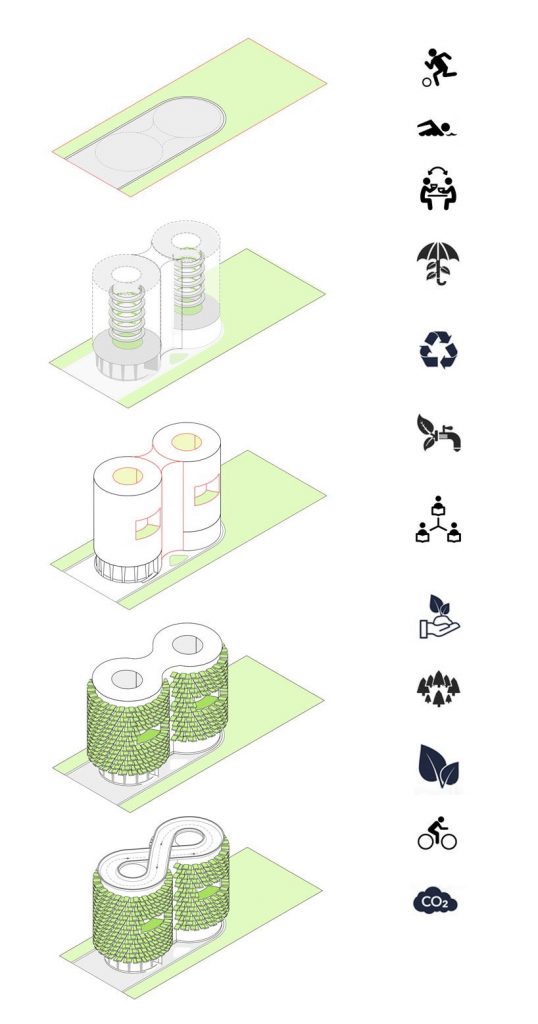
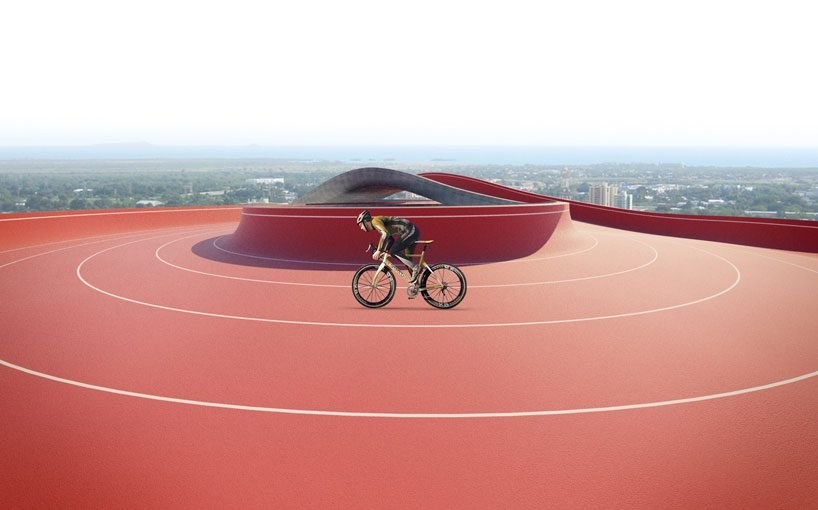
“Forest” school by Nudes (via designboom)
The focal point of the project is its eight-shaped loop of the rooftop. Conceived to accommodate a bicycle track, much welcomed in a city with scarce walkways and bike lanes, the rooftop can also be used for non-programmatic activities, workshops, student exhibitions, student led markets and recreation.

EuropaCity Centre Culturel Dédié au 7ème Art by UNStudio
The design for Centre Culturel Dédié au 7ème Art by international architecture firm UNStudio, with offices in Amsterdam, Shanghai, Hong Kong and Frankfurt, has been chosen the winner in a pitch for a cinema complex and cultural centre within EuropaCity, tourism and leisure district on the outskirts of Paris, masterplanned by Danish practice BIG.
The Centre Culturel building is thoughtfully embedded within the composition of the masterplan and its ‘Rolling Hills’ concept, yet expresses its own strong and recognizable identity. It encompasses three intertwined volumes of weathering steel, the material inspired by large scale landscape sculptures and much favoured for its resilience and aesthetics of its natural patination. Perforations in the steel facade will be added to channel the prevailing wind and naturally ventilate the indoor spaces.

EuropaCity Centre Culturel Dédié au 7ème Art by UNStudio
The volumes emerge from the ground, while the surrounding landscape continues as a sloping green carpet atop the roof of the building. The sloping shape was designed to achieve minimum overshadowing of the adjacent hotel and thereby ensure that it can enjoy access to full natural daylight throughout the year.
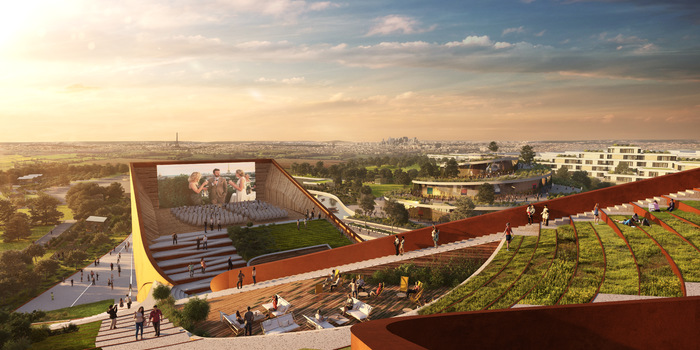
EuropaCity Centre Culturel Dédié au 7ème Art by UNStudio
The resulting rooftop terraces will host large outdoor cinema screens as well as restaurants and cafes, offering 360 degree views of Paris for the visitors. The vegetation on the park roofs will provide a layer of thermal insulation, reducing heat loss via the ceilings and preventing the spaces below from absorbing too much heat.
The whole programme makes the Centre Culturel a public cultural destination that celebrates the full experience of cinema in a truly public way.